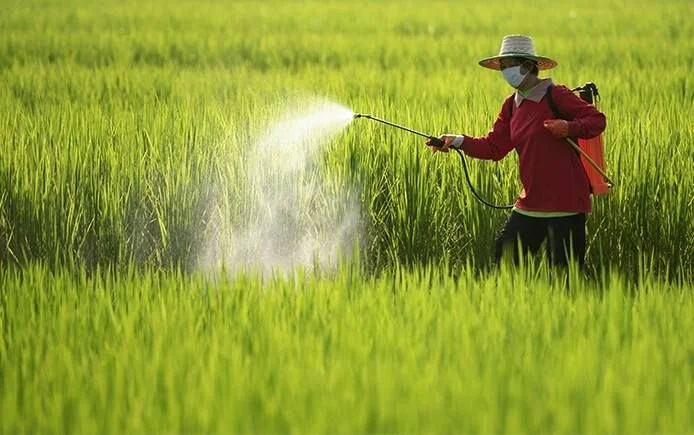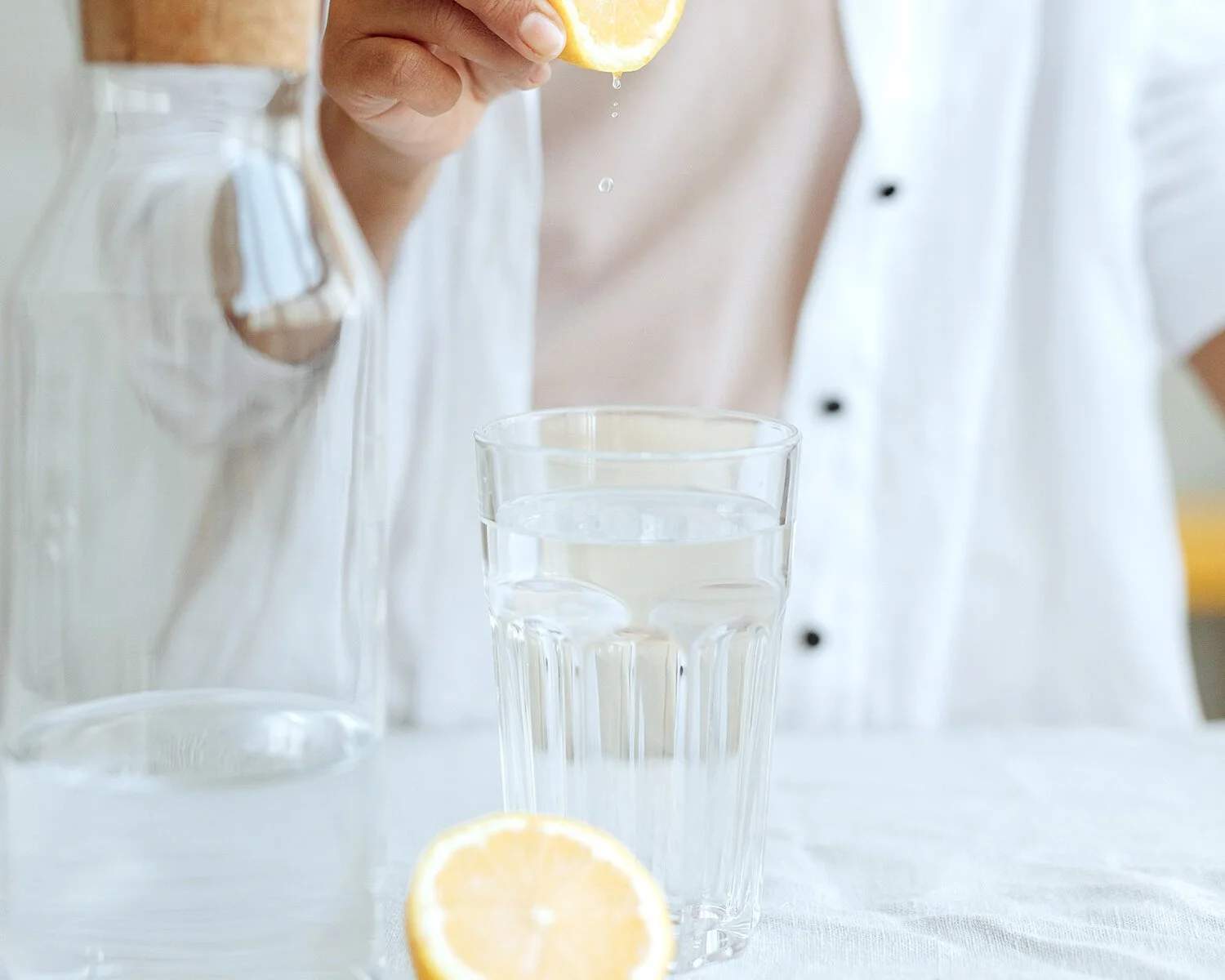Environmental Toxins & The Affect On Our Health
ENVIRONMENTAL TOXINS
While modern living has its conveniences, it has also introduced potentially harmful chemicals into the environment that may affect our health. These chemicals are often found in the clothes we wear, the foods we eat, the walls in our living spaces, and even the air we breathe.
Environmental toxins not only threaten our health but are likely to impact the health of future generations as well.
MANGANESE
Manganese is a free element found in nature as well as a metal with various industrial purposes. Manganese stiffens aluminum and prevents corrosion, making it an important element in materials like soda cans. Manganese concentrations in the air and groundwater rise with increased industrial activity. Although manganese is an essential mineral (meaning it’s necessary for human survival), it can be toxic in high concentrations. Your water may contain manganese if it’s discolored (brownish red), stains plumbing fixtures, and/or has an unusual taste or odor. If you suspect your water might contain manganese, get it tested by a state-certified laboratory. If levels are above standard safety levels, consider using a high-quality filtering system.
ARSENIC
Arsenic is a naturally occurring element that can be found within organic and inorganic forms. Arsenic found in soil, the environment, and groundwater is absorbed by crops and enters the food supply. The inorganic compound is a known human carcinogen and has been found in drinking water, rice-based food products, seaweed products, and certain brands of juice. Although certain types are banned or restricted in some regions of the world, arsenic can still be found in poultry feed and pesticides. To avoid arsenic-containing pesticides, opt for organic produce and choose poultry from producers who do not use artificial feed additives.
FLUORIDE
Fluoride is commonly added to water supplies and toothpaste to prevent dental caries and enhance bone growth. In high concentrations, it can have the exact opposite effect, so many caution to use it sparingly. Bottled water is often fluoridated, prompting many people to opt for non-fluoridated options when possible. To find out if your water is fluoridated, call your water supplier or use an at-home kit to test levels. High-quality water filters can be installed on your faucets to filter excess levels of fluoride and other minerals in the water supply.
CHLORPYRIFOS
Chlorpyrifos is a commonly used insect killer classified as “very highly toxic” for birds and most fish and “moderately toxic” for mammals.
Despite its recognized toxicity, it remains a widely used pesticide for both food and non-food crops. By opting for organic produce, you reduce the risk of ingesting harmful pesticides.
DDT/DDE
DDT/DDE is a commonly used pesticide that was banned in the United States in 1972. As a result of overuse before the ban, DDT can still be found lingering in the environment in the United States, while other regions of the world continue to use it. DDT breaks down into toxic by-products called DDE and DDD, which subsequently accumulate in the environment and within fat stores of organisms that ingest it. Animals that eat other animals are more likely to build up levels of DDT. Many people choose to avoid or minimize consumption of animal fat and purchase organic produce to avoid ingesting this toxic pesticide.
TETRACHLOROETHYLENE (PERC)
Tetrachloroethylene (PERC) is a chemical commonly used to dry-clean clothing and degrease metal because of its excellent solvent properties. When the vaporized chemical is inhaled, various health problems can arise, bringing the Environmental Protection Agency to classify this chemical as “likely to be carcinogenic” to humans. There are organic dry-cleaning services available that do not use this chemical. If you think you may be exposed to PERC in your workplace, don’t be afraid to be proactive and ask to speak with someone who can discuss safety measures.
LEAD
Lead is a naturally occurring metal that is found deep within the earth’s crust. Lead is found in the paint of many older homes, in drinking water that flows through old lead pipes and/or fixtures, and in contaminated soil. When ingested, lead can build up in the body over time and become toxic. If your home was built prior to 1978, you may want to test the paint and dust for lead as it was popular in building construction in the 1970s. Helpful safety measures can include staying away from chipping or peeling paint and avoiding tap water in these older homes until it is tested.
MERCURY
Mercury is a chemical once used in thermometers, barometers, and laxatives. The low cost of mercury-containing dental fillings has kept them on the market, despite the high cost on health. Don’t be afraid to request non-mercury fillings from the dentist or to ask to have old mercury fillings replaced. Another form of mercury that people are most exposed to is the organic compound methylmercury, which is found in fish and shellfish. Fish absorb this toxin in their water environments, and it builds up in their bodies over time. Certain fish and shellfish accumulate mercury more than others, resulting in varying levels of toxins among different types of seafood. Fish with the highest levels of mercury include mackerel, marlin, orange roughy, tilefish, shark, swordfish, and tuna and should be consumed in limited quantities.
TOLUENE
Toluene is a clear, colorless liquid that serves as an important organic solvent. It can be found naturally at low levels in crude oil or prepared synthetically. It is added to gasoline to improve the octane rating – the level to which it can be compressed before spontaneously igniting. It’s also used to make nylon and plastic soda bottles and added to paints, adhesives, cosmetics, perfumes, and antifreeze. Frequent inhalation of large amounts of this toxin can be harmful. Exposure to toluene can be avoided by taking proper precautions, such as wearing a safety mask when around wet paint, paint thinners, or glues; refraining from breathing in gasoline or car exhaust; and experimenting with chemical-free cosmetics and nontoxic nail polishes.
ETHANOL
Ethanol, or ethyl alcohol, is commercially produced by fermentation of sugars (for beverages) or synthetically (for industrial needs). It’s used to make everything from perfumes to alcoholic beverages to explosives. Even though ethanol can be consumed in alcoholic beverages, it’s toxic to the human body in large quantities. Alcohol is almost immediately absorbed into the bloodstream and can be especially harmful to fetus development. It is unknown whether there is a safe amount of alcohol that can be consumed during pregnancy. Currently, women who are pregnant or wish to become pregnant are encouraged to avoid any intake of alcohol.
POLYBROMINATED DIPHENYL ETHERS (PBDES)
Polybrominated diphenyl ethers (PBDEs) are man-made chemicals used as flame retardants in many plastic, foam, and fabric consumer products. Although they can be helpful to make products like furniture and other household items less flammable, the toxins are not chemically bound to the materials they’re added to, allowing them to easily infiltrate their surroundings. When purchasing new furniture, some people choose to opt for less flammable fabrics and materials (like leather, wool, and cotton) to avoid these chemicals.
POLYCHLORINATED BIPHENYLS (PCBS)
Polychlorinated biphenyls (PCBs) are synthetic organic chemicals that were once popular in industrial and commercial applications due to their non-flammability and chemical stability. They were banned from being manufactured in 1979 because of their recognized toxicity. There are still products and materials that may contain PCBs, such as transformers, oil-based paints, plastics, carbon copy papers, and floor finishes. When released into the environment, PCBs can travel long distances from the site of contamination and accumulate on plants, food crops, and within the organisms that ingest them. High concentrations have been found in farm-raised salmon and marine mammals. To avoid PCBs, opt for organic produce and wash well before eating.
REFERENCES
United States Environmental Protection Agency. (2007). Manganese: TEACH chemical summary. Retrieved from www.archive.epa.gov/region5/teach/web/pdf/manganese_summary.pdf
Hamblin, J. (2014, March 18). The toxins that threaten our brains. The Atlantic. Retrieved from www.theatlantic.com/health/archive/2014/03/the-toxins-that threaten-our-brains/284466
National Pesticide Information Center. (2012, October 12). Chlorpyrifos. Retrieved from www.npic.orst.edu/ingred/chlorpyrifos.html
United States Environmental Protection Agency. (2000). Tetrachloroethylene (perchloroethylene). Retrieved from www.epa.gov/sites/production/files/2016-09/documents/ tetrachloroethylene.pdf
National Institute on Alcohol Abuse and Alcoholism. (2000, December). Fetal alcohol exposure and the brain. Alcohol Alert. Retrieved from www.pubs.niaaa.nih.gov/publications/aa50.htm
Harvard Health Publications. (2004, April). Getting your omega-3s vs. avoiding those PCBs. The Family Health Guide. Retrieved from www.health.harvard.edu/staying-healthy/getting-your-omega-3s-vs avoiding-those-pcbsthe-family-healthguide




